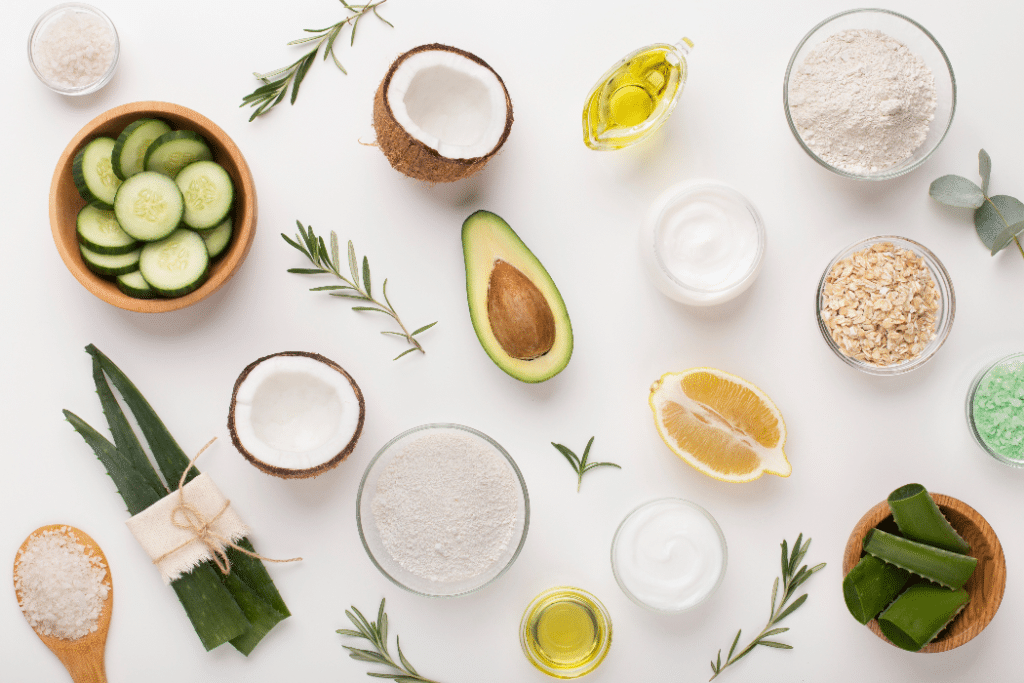The term “organic” has seen an exponential rise in popularity over the past several decades, moving from the fringe to the mainstream in grocery stores, farmer’s markets, and even cosmetic shops. But what does “organic” really mean, and why should we care? This article will delve into the philosophy, history, benefits, and misconceptions surrounding the organic movement. Along the way, we’ll address top questions you might have, aiming to provide a deeper understanding of organic products and practices.
Definition of Organic
“Organic” refers to the way agricultural products—food and fiber—are grown and processed. It’s a farming system designed to promote biodiversity, enrich soil health, and improve water quality by relying on more natural farming methods.
In the US, organic is often in reference to the USDA organic standards, which is federally regulated by the U.S. Department of Agriculture (USDA) (1). Specific requirements include the exclusion of synthetic fertilizers, pesticides, genetically modified organisms (GMOs), and irradiation. Organic livestock are raised without the use of antibiotics or growth hormones, and they have access to outdoor environments.
The Mission Behind Organic
The philosophy of organic farming is rooted in sustainability, environmental preservation, and soil health. It’s about working with nature, rather than against it, to produce healthier, environmentally friendly goods.
The mission is to produce food of high nutritional quality in sufficient quantity in a way that it sustains the health of the soil, ecosystems, and people. It rejects the use of synthetic fertilizers, pesticides, and genetically modified organisms, promoting instead a holistic, sustainable system that nurtures biodiversity, respects the natural environment, and supports animal health and welfare. The mission extends to advocating for a fair economy, which rewards all involved in the organic production chain, right from farmers to consumers, fostering relationships based on fairness and respect.
Organic farming and products are essential in the broader context of sustainable living, supporting reduced exposure to chemicals, improved animal welfare, and reduced carbon footprint.
Origins of Organic Farming
The term “organic farming” was first coined in the early 20th century in response to the rapid industrialization of agriculture, marked by the widespread use of synthetic fertilizers and pesticides. Sir Albert Howard, a British agronomist known as the ‘father of modern organic farming,’ played a key role in promoting organic methods. His book, “An Agricultural Testament,” published in 1940, drew on his observations of traditional Indian farming practices and emphasized the importance of maintaining soil health
Post World War II, organic farming gained more traction due to growing concerns about the harmful effects of synthetic chemicals on the environment and human health. In the 1960s and 1970s, the organic movement picked up speed with environmental activists promoting organic food as a solution to the ecological damage caused by conventional agriculture. This era also saw the establishment of various organic certification bodies and the introduction of legislation to regulate organic products, solidifying organic farming as a legitimate and beneficial alternative to conventional farming methods.
The Growth of Organic
Over time, the organic movement has grown and evolved significantly. In the U.S., organic sales reached $61.9 billion in 2020, up 12% from 2019 (2). The increasing consumer demand for organic products has driven more farmers to adopt organic farming practices.
Why is Organic Important?
Organic farming has benefits for both consumers and the environment. From a consumer standpoint, organic food is often perceived as healthier. While the nutritional difference between organic and conventionally grown food is still a topic of debate, some research indicates that organic foods may contain higher levels of certain nutrients, such as antioxidants consumers by reducing their exposure to synthetic pesticides and GMOs (3). Furthermore, organic products are free of synthetic pesticides and fertilizers, genetically modified organisms, and antibiotics, which many consumers seek to avoid for health reasons
The environmental advantages of organic farming are substantial. It plays a vital role in sustainable development by using farming practices that conserve water, reduce soil erosion, decrease pollution, and use less energy (4). Research results from the Rodale Institute’s Farming Systems Trial established organic farming matched or outperformed conventional agriculture across multiple dimensions including healthier soil, higher yields during extreme weathers, and lower operational cost (5).
The value of healthy soil is not to be overlooked and worth diving one layer deeper into. Healthy soil unlocks more nutrients in the food it produces, reduces floods, protects against droughts, and increases plant’s overall health. These practices can also contribute to mitigating climate change by enhancing soil’s ability to absorb and store carbon
Organic Certification Standards
Organic certification standards are designed to ensure that the products consumers purchase have been produced, processed, and handled according to strict guidelines. At a high level, these guidelines cover a range of criteria, including soil quality, animal raising practices, pest and weed control, and the use of additives. Farmers and processors must comply with these standards to be recognized as organic by accredited certification bodies. They are subject to regular inspections to ensure continued compliance.
Different countries may have varying standards for organic certification, but many principles are shared universally. For instance, in the United States, the National Organic Program (NOP) under the United States Department of Agriculture (USDA) is responsible for outlining the standards for organic farming. These standards encompass everything from the soil where crops are grown (which must be free from prohibited substances for at least three years) to the feed given to livestock (which must also be organic) (6). Pesticides, genetically modified organisms, synthetic growth hormones, and antibiotics are among the many inputs forbidden in organic production.
Other international bodies include EU Organic Certification and Japan Agricultural Standard (JAS) for organic products.
Types of Organic Labeling
The USDA has four distinct “organic” labeling categories (7):
- 100% organic: products must be made up of 100% certified organic ingredients
- Organic: products and ingredients must be certified organic except for specific cases (8)
- “Made with” organic ingredients: at least 70% of products must be certified organic ingredients. The final product cannot be labeled as organic or use the organic seal
- Specific organic ingredients: product contains less than 70% certified organic content. The final product cannot be labeled as organic or use the organic seal. They may list certified ingredients in the ingredients list
Organic vs. Non-Organic
Organic and non-organic farming methods differ primarily in how they approach soil health, animal raising practices, and pest and weed control. Organic farming prioritizes soil health, limits the use of synthetic pesticides and fertilizers, prohibits the use of GMOs, and emphasizes animal welfare. Conversely, non-organic farming often relies on synthetic fertilizers and pesticides, may use GMOs, and doesn’t have as strict animal welfare standards.
How to Support Organic?
- Buying Organic Products – You can support organic by purchasing organic products at your local grocery store or farmers’ market. Look for the USDA Organic or equivalent labels to ensure that the products meet organic standards.
- Promoting Organic Practices – Beyond personal consumption, you can support organic by promoting its benefits to others, advocating for policies that support organic farmers, or even starting your own organic garden.
Common Myths and Misconceptions about Organic
Some common misconceptions about organic include the idea that it’s too expensive, not sustainable, or not any healthier. However, when considering the environmental and health benefits, many argue that the value of organic goes beyond the price tag. Furthermore, studies like the ones conducted by the Rodale Institute demonstrate that organic farming can indeed be sustainable and beneficial to health.
Takeaways
Understanding what “organic” truly means is the first step towards more informed purchasing decisions. It goes beyond simply being a label on a product—it’s a commitment to sustainability, health, and a better future for our planet. As consumers, we have the power to support this mission with every organic product we choose.
Throughout this article, we’ve explored what “organic” means, its benefits, how it’s certified, and how to support it. Now, it’s your turn to take action. Support organic farming, choose organic products, and contribute to a healthier, more sustainable world.
References
- “Organic 101: What the USDA Organic Label Means.” U.S. DEPARTMENT OF AGRICULTURE, 2012. https://www.ewg.org/research/body-burden-pollution-newborns
- “U.S. organic sales soar to new high of nearly $62 billion in 2020.” Organic Trade Association, 2021. https://www.cdc.gov/niosh/topics/ammonia/default.html
- “The influence of organic and conventional cultivation systems on the nutritional value and content of bioactive compounds in selected tomato types.” National Library of Medicine, 2012. https://pubmed.ncbi.nlm.nih.gov/22351383/
- “Organic agriculture in the twenty-first century.” National Library of Medicine, 2016. https://pubmed.ncbi.nlm.nih.gov/27249193/
- “Organic agriculture in the twenty-first century.” Rodale Institute. https://rodaleinstitute.org/science/farming-systems-trial/
- “About the Organic Standards.” USDA. https://www.ams.usda.gov/grades-standards/organic-standards
- “Understanding the USDA Organic Label.” USDA, 2016. https://www.usda.gov/media/blog/2016/07/22/understanding-usda-organic-label
- “Substances for Organic Crop + Livestock Production.” USDA, 2013. https://www.ams.usda.gov/sites/default/files/media/Allowed-Prohibited%20Substances.pdf




